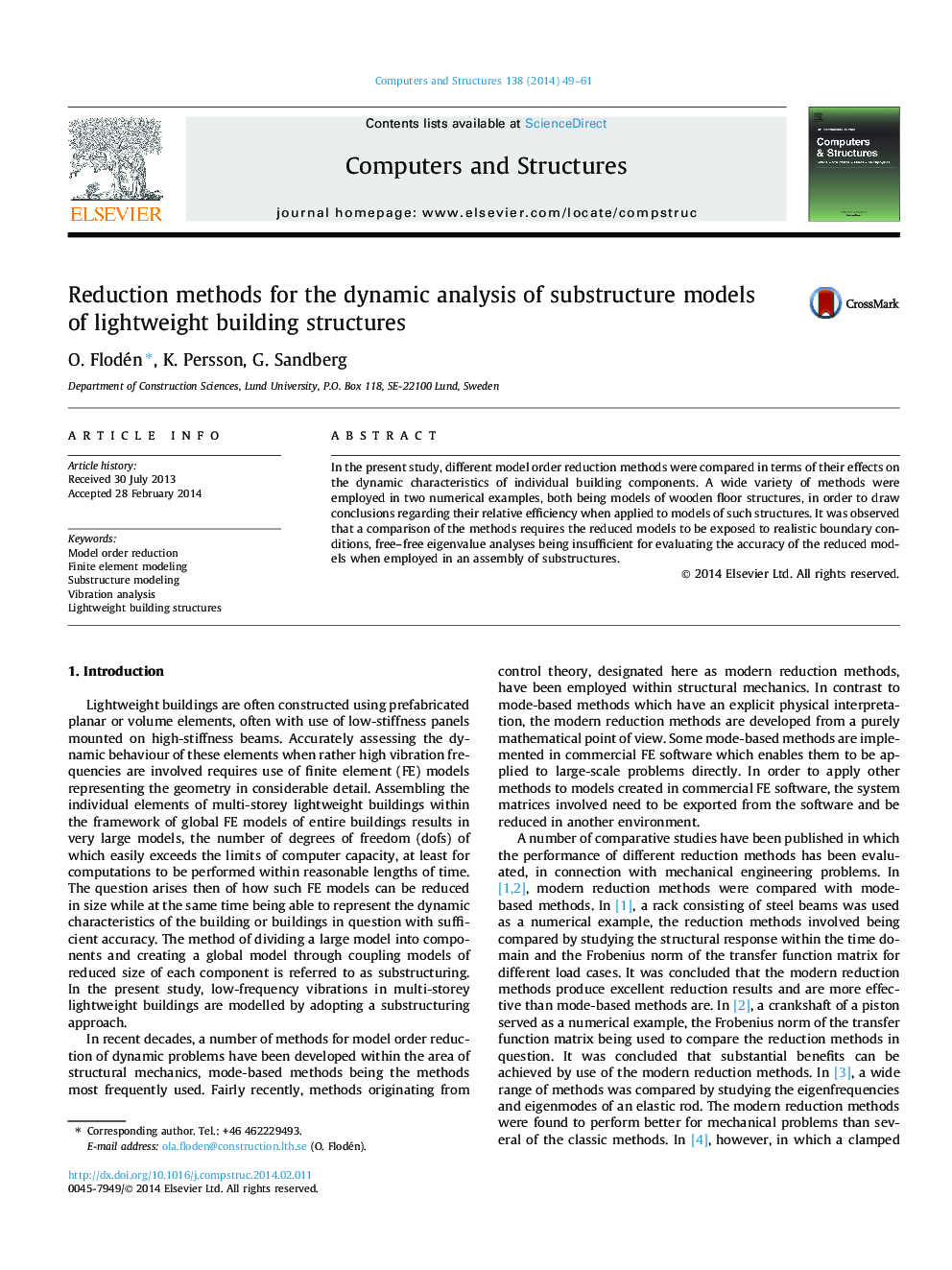| Article ID | Journal | Published Year | Pages | File Type |
|---|---|---|---|---|
| 6924667 | Computers & Structures | 2014 | 13 Pages |
Abstract
In the present study, different model order reduction methods were compared in terms of their effects on the dynamic characteristics of individual building components. A wide variety of methods were employed in two numerical examples, both being models of wooden floor structures, in order to draw conclusions regarding their relative efficiency when applied to models of such structures. It was observed that a comparison of the methods requires the reduced models to be exposed to realistic boundary conditions, free-free eigenvalue analyses being insufficient for evaluating the accuracy of the reduced models when employed in an assembly of substructures.
Related Topics
Physical Sciences and Engineering
Computer Science
Computer Science Applications
Authors
O. Flodén, K. Persson, G. Sandberg,
